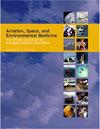Manned-unmanned teaming: expanding the envelope of UAS operational employment.
引用次数: 3
Abstract
Abstract : The employment of unmanned aerial systems (UAS) has become ubiquitous, not only within modern multinational militaries, but also among the civilian and commercial aviation communities. Although the concept of UAS application dates much farther back than most realize (unmanned balloons were used during the American Civil War for ordnance delivery with limited success, for example), most trace the origins of contemporary apposite UAS application to the Israelis and Americans in the 1970s and 1980s ( 11 ). Over the past few decades, there has been rapid expansion of UAS technology, capability, and employment strategies on many fronts. One of these important developments includes interoperability of manned and unmanned aerial platforms to enhance mission command and complement combat power. Titled Manned-Unmanned Teaming (MUM-T), this entails the synchronized employment of manned and unmanned air (and ground) vehicles, sensors, and weapons systems. The concept has existed for decades, but relatively recent advances in technology and doctrine have spearheaded the movement from concept to real-world application. And as development continues to swiftly mature, the aerospace medical community at large would do well to pay attention. Many of these applications, while no doubt providing enhanced capability, may pose aeromedical and human factors challenges to which we should remain vigilant. These may include (but are not limited to) visual overload, increased workload and task saturation, distraction and diminished fl ight situation awareness (SA), motion sickness, and spatial disorientation (SD).有人-无人组队:扩大无人机作战使用的范围。
本文章由计算机程序翻译,如有差异,请以英文原文为准。
求助全文
约1分钟内获得全文
求助全文

 求助内容:
求助内容: 应助结果提醒方式:
应助结果提醒方式:


